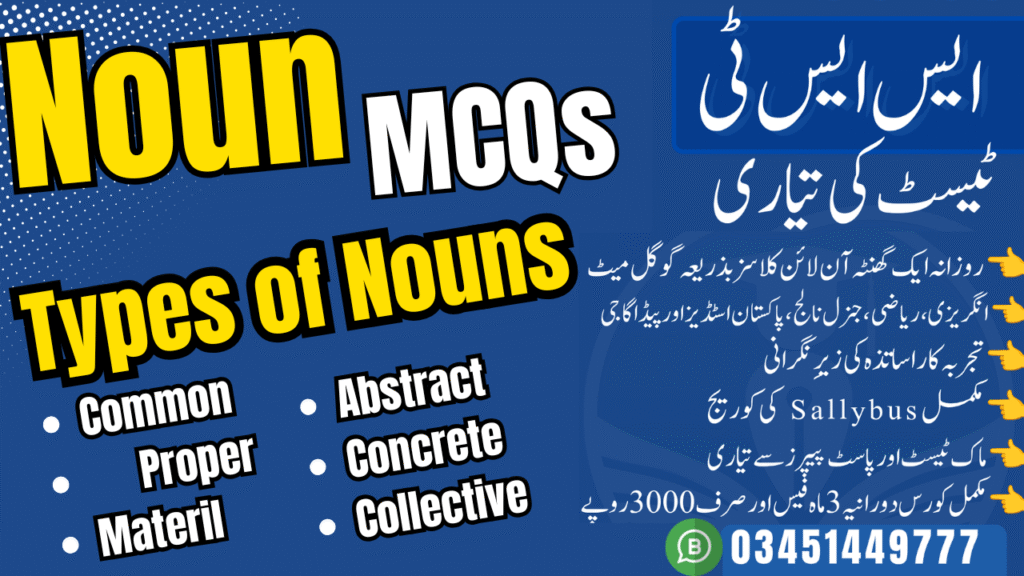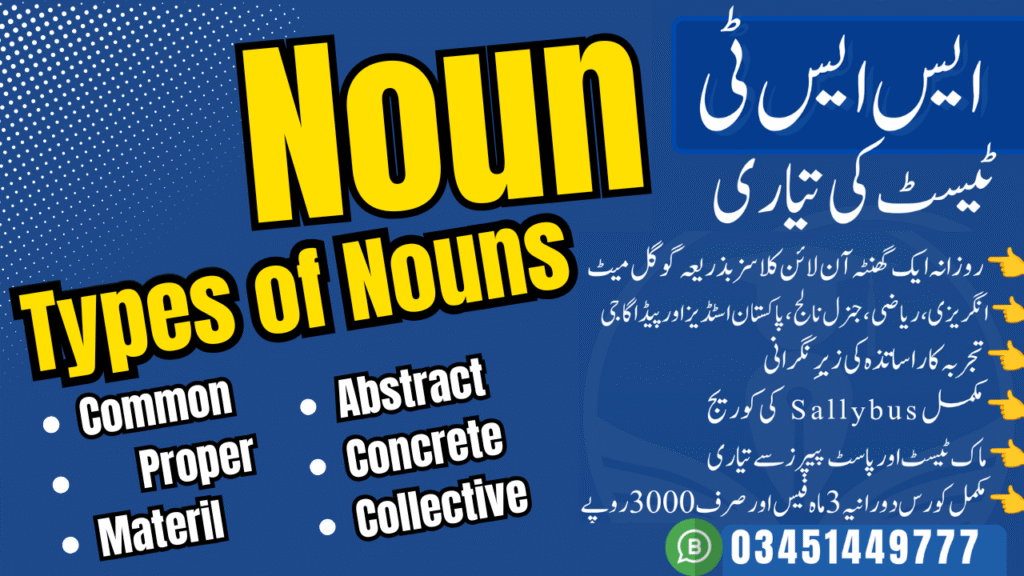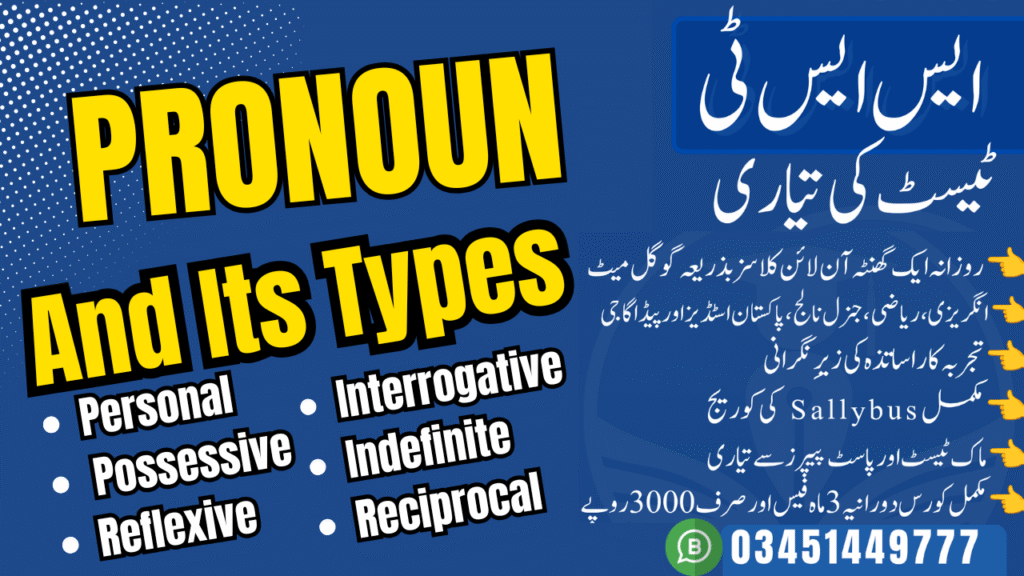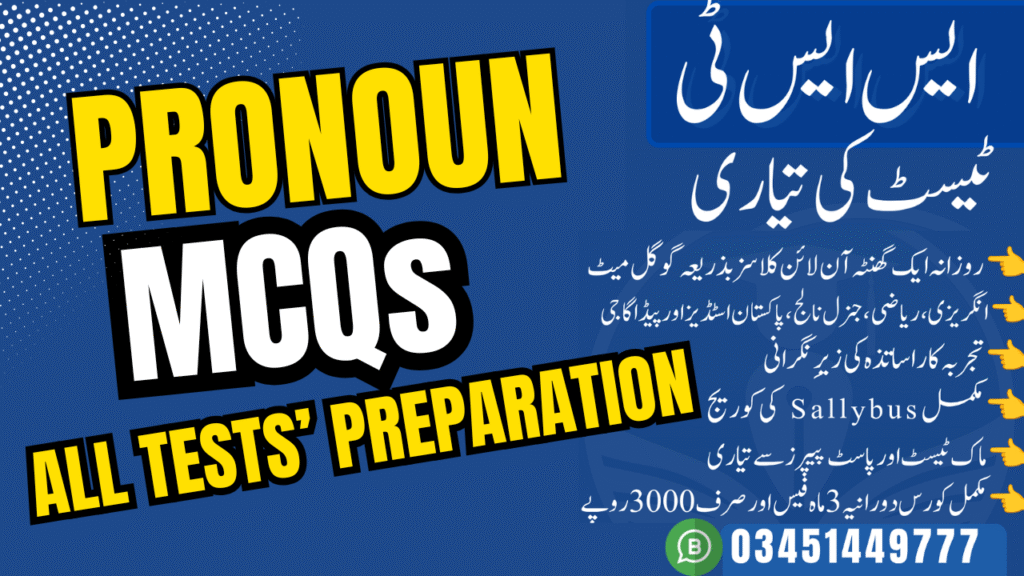What is Heuristic Teaching?
The heuristic method of teaching is a student-centered approach where learners discover knowledge and solutions for themselves through experimentation, investigation, and problem-solving, rather than direct instruction. Teachers act as facilitators, posing questions and providing guidance, while students actively engage in hands-on activities and exploration to foster critical thinking, independence, and a deeper understanding of concepts. This method emphasizes the process of learning and developing skills like scientific inquiry and self-reliance.
In the modern education, a powerful pedagogical approach is gaining traction by shifting the focus from rote memorization to active discovery. This is the heuristic method of teaching, a philosophy that fundamentally redefines the roles of teacher and student, transforming the classroom into a laboratory for inquiry and a training ground for the mind. It challenges the traditional model of education, advocating for a process where learning is not something done to a student, but something a student does.
Heuristic Method of Teaching 100 MCQs Test by Arshad Iqbal Yousafzai
1 of 100
Score: 0
Quiz Complete!
You answered out of 100 questions correctly.
Defining the Heuristic Method of Teaching (The Art of Discovery)
The heuristic method of teaching is a student-centered instructional approach that emphasizes problem-solving, discovery-based learning, and hands-on experience as the primary vehicles for acquiring knowledge. The term “heuristic” itself provides the clearest window into its philosophy. It is derived from the ancient Greek word heuriskein (or heurisco), which means “to find” or “to discover”. This etymological root is not merely incidental; it is the guiding principle of the entire methodology. The famous exclamation “Eureka!”—allegedly cried by Archimedes upon his discovery in the bath—stems from this same verb, capturing the spirit of insight and personal discovery that the heuristic method seeks to cultivate in every learner.
This approach stands in stark contrast to didactic or expository methods, where the teacher acts as the primary source of information, transmitting facts to be absorbed by passive students. Instead, the heuristic method recasts the teacher’s role from a “sage on the stage” to a “guide on the side”. The educator’s task is not to provide answers directly but to pose intriguing, open-ended problems, facilitate exploration, and guide students toward their own conclusions.
It is best understood as an umbrella philosophy that encompasses several related active-learning strategies, including:
- Inquiry-Based Learning: Where students explore concepts by asking questions and seeking solutions through investigation.
- Problem-Based Learning (PBL): Where learning is structured around authentic, complex problems that students must solve.
- Project-Based Learning: Where students engage in an extended process of inquiry in response to a complex question, problem, or challenge.
In all these forms, the common thread is the empowerment of the student to actively construct knowledge rather than passively receive it.
The term “heuristic” embodies a crucial duality. On one hand, it refers to the structured pedagogical process—the “method of teaching”—with its principles, steps, and defined roles. This is the external framework the educator creates. On the other hand, it refers to the internal, often messy, and deeply personal cognitive process of discovery—the “act of finding”—that occurs within the student’s mind. Therefore, the heuristic method is not simply about letting students discover things randomly. It is a sophisticated educational strategy for creating a carefully structured environment that activates, guides, and refines a student’s own innate heuristic abilities for problem-solving and learning.
How to Think, Not What to Think
The ultimate objective of the heuristic method is not merely the transmission of a body of knowledge but the cultivation of a particular kind of mind: one that is curious, critical, independent, and resilient. The focus is squarely on the process of learning itself. The goal is to teach students how to think, analyze, and solve problems, equipping them with the cognitive tools they will need for a lifetime of learning, long after specific facts have been forgotten.
This philosophy positions the heuristic approach as more than a collection of classroom techniques; it is an educational “attitude” or “mindset”. It operates on the fundamental belief that genuine understanding is not something that can be given but must be built. Students are placed at the very center of the educational experience, empowered to construct their own knowledge through personal effort and direct experience.
By engaging in this process, students develop a suite of skills that are essential for success in the 21st century. These include:
- Critical Thinking: The ability to analyze information, question assumptions, and evaluate evidence.
- Problem-Solving: The capacity to confront complex, real-world challenges and develop creative solutions.
- Creativity: The disposition to approach problems from novel angles and generate innovative ideas.
- Self-Reliance: The confidence and skill to learn independently, a crucial attribute in a rapidly changing world.
In essence, the heuristic method prepares students not just for the next exam, but for the unpredictable challenges of life and work that lie beyond the classroom walls.
The Genesis of the Heuristic Method
While the formalization of the heuristic method is a relatively modern development, its philosophical underpinnings are as old as education itself. The idea that true learning comes from guided inquiry rather than passive reception can be traced through millennia of human thought, culminating in a revolutionary push against the educational norms of the 19th century.
From Socratic Inquiry to Greek Mathematics
The spirit of heuristic learning can be found in the ancient world. The Socratic method, with its emphasis on asking probing questions to stimulate critical thinking and illuminate ideas, is a clear precursor. Socrates did not lecture; he engaged his students in a dialogue that forced them to examine their own beliefs and arrive at their own understanding.
This thread continues in the work of Aristotle, whose concept of epagôgê, or induction, described a method of reasoning that moves from particular observations to general truths. It was a way to find knowledge, not simply to prove what was already known, and thus can be seen as an early form of heuristic reasoning.
Perhaps the most direct ancient antecedent comes from the 4th-century Greek mathematician Pappus of Alexandria. In his work, Pappus described a process of “analysis” for problem-solving, which involved working backward from the desired solution to find the steps needed to reach it. This technique of backwards-processing is a classic problem-solving heuristic that is still taught today. These ancient examples demonstrate that the core principles of the heuristic method—inquiry, discovery, and strategic problem-solving—have long been recognized as fundamental to intellectual progress.
Forging the Modern Method in Science Education (The Armstrong Revolution)
The modern formulation of the heuristic method of teaching is largely attributed to one pivotal figure: Professor Henry Edward Armstrong (18-1937), a prominent British chemist and educator. Armstrong’s work in the late 19th and early 20th centuries was a direct and forceful reaction against the prevailing educational model of his time.
Armstrong was deeply dismayed by the passivity he observed in his students. They were conditioned to be passive consumers of information, content to memorize facts and definitions simply to pass examinations. He saw this didactic, authoritarian approach to teaching as fundamentally at odds with the true nature of science, which is a process of active inquiry and experimentation.
This dissatisfaction fueled his quest to develop a new pedagogy. He christened his approach the “heuristic method,” defining it with a statement that has become its touchstone:
“Heuristic method is a method of teaching which involves our placing of children as far as possible in the attitude of a discoverer.”
Armstrong’s revolution was not just pedagogical; it was a reflection of the broader socio-cultural context of his era. The late 19th century was a time of extraordinary scientific advancement and industrial innovation. He argued, in essence, that education should mirror the most dynamic and progressive force of the age: the scientific method. To learn science, students should do science. This meant getting them into the laboratory to conduct experiments, make observations, and draw their own conclusions, rather than simply being told about scientific facts. His advocacy was immensely influential, leading to a dramatic increase in the number of school chemistry laboratories across Britain, from fewer than 150 in the 1870s to over 1,000 by the 1900s. He captured his philosophy in his 1903 book, The Teaching of Scientific Method, solidifying his legacy as the father of the modern heuristic approach.
The Influence of Dewey and Pólya (20th-Century Evolution)
Armstrong’s ideas resonated with other educational reformers and thinkers of the 20th century. His philosophy found a powerful ally in the work of American philosopher John Dewey, whose theories of experiential education also argued that students learn best by doing and by connecting classroom concepts to real-world experiences.
While Armstrong provided the overarching philosophy, it was Hungarian mathematician George Pólya (1887-1985) who provided a concrete and practical framework for the process of heuristic thinking. In his seminal 19 book, How to Solve It, Pólya outlined a four-step approach to problem-solving that has become a classic in mathematics education and beyond. His steps are:
- Understand the problem.
- Devise a plan.
- Carry out the plan.
- Look back (reflect on the solution).
Pólya’s work was instrumental in demystifying the process of discovery. He showed that problem-solving was not a magical act of genius but a set of learnable strategies, or heuristics, such as “draw a picture,” “work backward,” or “look for a pattern”. Formalizing these strategies, Pólya provided educators with the tools to explicitly teach the “how” of heuristic thinking, complementing Armstrong’s vision of placing students in the “attitude of a discoverer.”
Core Principles of Heuristic Pedagogy
The heuristic method is not an unstructured free-for-all. It is guided by a set of core principles that form an architectural blueprint for the learning experience. These principles are not isolated rules to be followed mechanically but rather form an interconnected, dynamic system. When working in concert, they create an environment where authentic, student-driven learning can flourish.
The Principle of Activity (Learning by Doing)
This is the foundational pillar of the heuristic method. It asserts that knowledge is not a commodity to be passively received but an understanding that must be actively constructed by the learner. Students learn best when they are physically and mentally engaged—when they are doing something. This principle manifests in the classroom through hands-on experiments, collaborative projects, simulations, and any activity that requires students to interact with the material directly rather than just listening to a lecture. The act of doing, of grappling with a problem firsthand, is what drives the self-learning experience.
The Principle of Logical Inquiry
The heuristic method is a rigorous intellectual endeavor that aims to develop students’ capacity for logical thought. It combines both inductive reasoning (drawing general conclusions from specific examples) and deductive reasoning (applying general rules to specific cases). Through experimentation and analysis, students are encouraged to move beyond surface-level observations. They learn to question assumptions, analyze information critically, evaluate the validity of evidence, and construct coherent, logical arguments to support their conclusions. The goal is to cultivate a scientific attitude and a methodical approach to inquiry.
The Principle of Purposeful Experience
For learning to be meaningful and lasting, it must be relevant. This principle emphasizes that learning activities should be connected to students’ lives and the world around them. The heuristic method strives to create authentic learning opportunities where students can see the real-world application of the concepts they are studying. This purposeful self-exploration not only fosters a deeper understanding of the subject matter but also enhances knowledge retention because the information is anchored to a meaningful context. When students understand the “why” behind their learning, their motivation and engagement increase dramatically.
The Principle of Guided Autonomy (Minimal Intervention)
In a heuristic classroom, the teacher must master the delicate art of guiding without directing. This principle dictates that teachers should act as facilitators of learning, not as dispensers of answers. Their role is to provide the necessary tools, resources, and initial problem statement, and then to step back and allow students to explore. Intervention should be minimal and strategic, typically taking the form of probing questions that help students overcome obstacles or think more deeply about their process. This approach is crucial for fostering independence, self-reliance, and the confidence that students can solve problems on their own.
The Principle of Trial and Error
The heuristic method fundamentally reframes the concept of failure. Mistakes are not viewed as endpoints to be avoided but as valuable data points and integral parts of the learning journey. This principle promotes a classroom culture where experimentation is encouraged and errors are seen as opportunities for genuine learning to occur. Creating a psychologically safe environment for risk-taking, teachers empower students to test hypotheses and explore unconventional solutions without fear of ridicule, which is essential for both creativity and deep conceptual understanding.
These five principles operate as a cohesive system. A purposeful, real-world problem (Purposeful Experience) provides the motivation for hands-on engagement (Activity). As students work, they must use observation and reason to make sense of their experience (Logical Inquiry), a process that will inevitably involve setbacks (Trial and Error). Throughout this journey, the teacher provides just enough support to keep the process productive without robbing the student of the opportunity for discovery (Guided Autonomy). It is the seamless integration of these principles that defines a truly heuristic learning environment.
Redefining Roles in The Heuristic Classroom
The implementation of the heuristic method requires a profound transformation of the traditional classroom dynamic. It demands that both teachers and students step out of their familiar, deeply ingrained roles and embrace new responsibilities and mindsets. This transition is often the most challenging aspect of adopting the method, as it involves unlearning the habits of a lifetime of didactic education.
The Teacher as “Guide on the Side”
The role of the teacher in a heuristic classroom is far from passive; it is an intensely active and highly skilled form of facilitation that requires a complete shift in perspective from instruction to guidance.9 The teacher’s primary function is to architect an environment ripe for discovery. This involves several key responsibilities:
- Problem Architect: The process begins with the teacher designing or selecting an intellectually stimulating, open-ended problem, task, or query. This problem must be challenging enough to pique curiosity and inspire independent investigation but not so difficult as to be discouraging. It must be relevant to the learning objectives and, whenever possible, to the students’ own lives.
- Resource Curator: The teacher is responsible for providing students with the necessary materials, tools, books, and other resources they will need for their exploration. The key is to provide access to information without giving away the solution. This might involve setting up a lab station, curating a collection of primary source documents, or pointing students toward relevant databases.
- Environment Cultivator: A successful heuristic classroom requires a supportive and psychologically safe atmosphere. The teacher must foster a culture of open communication where students feel comfortable asking questions, sharing nascent ideas, taking intellectual risks, and learning from their mistakes. Collaboration is often a key component, and the teacher must structure activities that promote effective teamwork.
- Socratic Questioner: This is perhaps the most critical and difficult skill for the heuristic teacher to master. When a student is stuck, the instinct is often to provide an answer to save time and alleviate frustration. The heuristic facilitator resists this urge. Instead, they ask probing, thought-provoking questions designed to guide the student’s thinking process. Questions like, “What have you tried so far?”, “What does your data suggest?”, or “Is there another way to look at this problem?” help students develop their own problem-solving pathways.
- Process Observer and Feedback Provider: While students work, the teacher circulates, observes, and monitors their progress. The goal is to provide timely and constructive feedback that focuses on the student’s process and thinking, rather than just the correctness of their answer. The teacher also facilitates reflection, prompting students to think about what they have learned, how they learned it, and how their understanding has changed.
The Student as “Independent Discoverer” ( Self-Directed Learning)
Just as the teacher’s role is transformed, so too is the student’s. In the heuristic model, students are no longer passive recipients of information but are cast in the role of active researchers, investigators, and creators of their own knowledge. This active stance involves several key behaviors:
- Active Investigation: The student, working either individually or in a small group, is responsible for tackling the problem presented. This involves gathering information, conducting experiments, testing hypotheses, and exploring various potential solutions. They are the engines of the learning process.
- Critical Thinking and Decision Making: As they investigate, students must constantly analyze data, make choices about their next steps, and evaluate the results of their actions. They learn firsthand from the consequences of their decisions, embracing trial and error as a fundamental part of discovery.
- Ownership and Accountability: The heuristic method places the responsibility for learning squarely on the student’s shoulders. They are accountable for their own progress and are empowered to take ownership of their educational journey. This fosters a sense of independence and self-reliance.
- Collaboration and Communication: When working in groups, students learn to share their findings, articulate and defend their ideas, listen to different perspectives, and build upon the knowledge of their peers. The discussion and reporting of findings is a crucial step where learning is consolidated and clarified.
This redefinition of roles is not simply a matter of learning new techniques. It requires a conscious effort to unlearn the deeply embedded scripts of traditional schooling. Teachers must learn to be comfortable with a degree of uncertainty and to trust in their students’ ability to find their own way. Students, in turn, must learn to move past the learned helplessness of waiting to be told what to do and to embrace the challenge and responsibility of self-directed inquiry. Navigating this psychological and behavioral shift is the first and most critical step toward a successful heuristic classroom.
Advantages of the Heuristic Method
When successfully implemented, the heuristic method of teaching yields a wide array of profound and lasting benefits that extend far beyond the mere acquisition of content knowledge. The impact is holistic, touching not only what students know (cognition) but also how they feel about learning (affect) and how they understand their own learning processes (metacognition).
Enhancing Critical Thinking and Problem-Solving (Sharpening the Mind)
The most frequently cited advantage of the heuristic method is its unparalleled ability to cultivate higher-order thinking skills. Consistent engaging with open-ended problems, students are trained to think like scientists, historians, and mathematicians. They learn to:
- Analyze Information: Break down complex problems into manageable parts.
- Question Assumptions: Move beyond accepting information at face value and probe for underlying biases or unstated premises.
- Evaluate Evidence: Assess the credibility and relevance of data and sources.
- Develop Reasoned Judgments: Construct logical arguments and draw conclusions based on evidence rather than opinion.
These skills are not abstract academic exercises; they are essential for navigating a complex world and are particularly valuable in fields that demand sophisticated problem-solving, such as medicine, engineering, and law.
Improving Long-Term Retention
Learning that is active is learning that lasts. The process of discovering knowledge for oneself—of grappling with a problem, experimenting with solutions, and arriving at a moment of insight—creates far stronger and more durable neural pathways than passively memorizing information from a lecture or textbook. Research suggests that students in heuristic-based classrooms can retain significantly more information than their counterparts in traditional settings. Connecting new concepts to direct, personal experience, the heuristic method ensures that knowledge is not just stored temporarily but is deeply understood and integrated.
Fostering Creativity and Innovation
Standardized curricula and single-right-answer problems can stifle creativity. The heuristic method does the opposite. Presenting students with ambiguous, open-ended challenges, it encourages them to think outside the box and approach problems in novel and creative ways. The emphasis on trial and error liberates students to experiment with unconventional ideas, fostering an innovative mindset that sees problems not as obstacles but as opportunities for new thinking.
Building Resilience and Confidence
The experience of successfully navigating a difficult challenge independently is a powerful confidence builder. When students realize they can solve problems on their own, they develop a sense of self-efficacy and intellectual self-reliance. The method also cultivates a growth mindset—the belief that intelligence and ability can be developed through effort and perseverance. Learning to view setbacks not as failures but as learning opportunities, students develop the resilience needed to tackle increasingly difficult challenges both in school and in life.
Cultivating Lifelong Learners
Perhaps the most important benefit of the heuristic method is that it teaches students how to learn. In a world where information becomes obsolete at a breathtaking pace, the ability to learn independently is the ultimate survival skill. The heuristic method ignites and nurtures students’ natural curiosity, encouraging them to ask their own questions and seek out their own answers. It equips them with the inquiry skills and the self-directed learning habits that will enable them to adapt, grow, and thrive long after their formal education has ended.
This web of benefits demonstrates a powerful, self-reinforcing cycle. The cognitive act of solving a problem leads to the affective feeling of confidence and engagement. This positive emotional experience, in turn, reinforces the metacognitive belief that “I am a capable learner,” which encourages the student to tackle even more complex cognitive challenges. It is this holistic development of the learner that constitutes the true value of the heuristic method.
Limitations and Challenges
Despite its profound benefits, the heuristic method of teaching is not a panacea. It presents a number of significant practical and pedagogical challenges that must be acknowledged and addressed for successful implementation. A realistic understanding of these limitations is crucial for educators considering this approach.
Time, Curriculum, and Assessment
One of the most significant barriers to the widespread adoption of the heuristic method is its practical demands.
- Time-Consuming Nature: Discovery is not an efficient process. Allowing students to explore, experiment, and even go down wrong paths takes considerably more time than simply presenting them with the correct information directly. This can create significant tension with the need to cover a broad, content-heavy curriculum within a fixed academic year.
- Assessment Complexity: Traditional assessment methods, such as multiple-choice tests, are ill-suited to measuring the skills fostered by heuristic learning. Evaluating the process of inquiry, the quality of critical thinking, and the development of problem-solving skills is far more complex and subjective than grading for correct answers. This requires educators to develop more sophisticated assessment tools, such as rubrics, portfolios, and observational checklists.
High Demands on Teacher Skill
The heuristic method places extraordinary demands on the teacher. It is not an easier way to teach; it is a more difficult and complex one.
- Advanced Skill Set: A successful heuristic facilitator must be a subject matter expert, a skilled questioner, a keen observer of student thinking, and a master of classroom management. The art of guiding without directing, of providing just the right amount of support at just the right moment, is a sophisticated skill that requires extensive training and practice.
- Patience and Restraint: Teachers must possess immense patience and the ability to resist the ingrained temptation to jump in with answers when students are struggling. This requires a deep trust in the learning process and in the students’ capabilities.
Learner Variability and Suitability
The heuristic method is not a one-size-fits-all solution and may not be appropriate for all learners or all content.
- Student Readiness: Some students, particularly those accustomed to highly structured, teacher-directed environments, may struggle with the ambiguity and independence required by the heuristic method. Students with lower levels of prior knowledge or certain learning disabilities may become frustrated and disengaged without more direct support. The method is also generally considered less suitable for very young, primary-level learners who may lack the cognitive structures for self-directed inquiry.
- Content Appropriateness: Not all subject matter lends itself to discovery. Foundational facts, basic definitions, safety procedures, or established conventions are often learned more efficiently and effectively through direct instruction. The heuristic method is most powerful when applied to complex concepts, principles, and problem-solving domains.
The Problem of Cognitive Bias
A more subtle but profound challenge lies in the very nature of heuristic thinking itself. In psychology, a “heuristic” is defined as a mental shortcut that, while efficient, can lead to systematic errors in judgment known as cognitive biases. For example, the availability heuristic might lead a student to over-generalize from a single, memorable experiment, while the confirmation bias might cause them to seek out only evidence that supports their initial hypothesis.
If not carefully managed, a heuristic classroom could inadvertently allow students’ “discoveries” to simply be a reinforcement of their pre-existing misconceptions or biases. This presents the risk of “inefficient discovery,” where students invest significant time and effort only to arrive at a flawed or superficial understanding. The antidote to this is not more direct instruction, which would undermine the method’s core purpose. Instead, it requires a more sophisticated form of facilitation that emphasizes metacognition. The teacher’s role must extend beyond guiding the discovery to guiding the validation of that discovery. Asking questions like, “How can you be sure that’s correct?”, “What are the limitations of your conclusion?”, and “What might be an alternative explanation?”, the teacher prompts students to critically examine their own thinking processes, thereby mitigating the risk of entrenching biased or inaccurate knowledge.
Practical Implementation and Examples
The power of the heuristic method lies in its adaptability. While the specific activities vary by subject, the underlying cognitive process it aims to cultivate—inquiry, evidence-gathering, analysis, and synthesis—is universal. The method is fundamentally a framework for teaching disciplinary thinking; it teaches students to “think like a scientist” or “think like a historian” by engaging them in the authentic practices of that field.
The Scientific Method in Practice (Science)
Science is the natural home of the heuristic method, as the pedagogy directly mirrors the scientific method of inquiry. Instead of memorizing the steps of the water cycle from a diagram, students are given a miniature greenhouse, weather maps, and precipitation gauges and are challenged to discover the journey of water themselves.
Example Activity: The Floating Ice Cube Problem
- Problem: The teacher poses a simple but intriguing question: “Why do ice cubes float in water but sink in rubbing alcohol?”.
- Exploration: Students are provided with beakers, water, rubbing alcohol, ice cubes, and measuring tools. In small groups, they are encouraged to experiment, observe, and discuss their findings. They might measure the mass and volume of each substance to calculate density.
- Discovery: Through their own hands-on investigation, students discover the concept of density and conclude that an object floats if it is less dense than the liquid it is in.
- Teacher’s Role: The teacher facilitates by asking guiding questions like, “What differences do you observe between the two liquids?” or “How could you measure the ‘heaviness’ of the same amount of each liquid?” but never provides the answer directly.
From Puzzle to Proof (Mathematics)
In mathematics, the heuristic method shifts the focus from memorizing formulas to developing problem-solving prowess. It uses puzzles, real-world scenarios, and logic problems to engage students in mathematical thinking.
Example Activity: Discovering the Area of a Parallelogram
- Problem: Instead of giving the formula A=b×h, the teacher provides students with paper parallelograms, scissors, and rulers and asks, “Can you find a way to determine the area of this shape using what you already know about the area of a rectangle?”.
- Exploration: Students manipulate the paper, perhaps cutting off a triangle from one end and moving it to the other.
- Discovery: Through this manipulation, they physically transform the parallelogram into a rectangle with the same base and height. They discover for themselves that the area formula must be the same as that of a rectangle.
- Frameworks: This process can be structured using frameworks like George Pólya’s four-step method or the specific heuristics taught in the Singapore Math model, such as “Look for a Pattern” or “Simplify the Problem”. This approach also helps students understand the crucial distinction between the exploratory work of
solving for a proof and the formal process of writing a proof.
Reading Like a Historian (History & Social Sciences)
In history, the heuristic method transforms students from passive readers of a single textbook narrative into active historical investigators who analyze evidence to construct their own interpretations of the past.9 The core of this approach is working with primary sources.
Example Activity: The American Revolution Debate
- Problem: Rather than lecturing on the causes of the American Revolution, the teacher asks, “Imagine you are a colonist in the 1770s. What events or policies might make you question British rule?”.
- Exploration: Students are given a collection of primary source documents: excerpts from letters written by colonists, newspaper articles from the period, political cartoons, and texts of British laws like the Stamp Act.
- Discovery: Students engage in historical heuristics to analyze these documents 9:
- Sourcing: Who wrote this document? When? What was their purpose?
- Contextualization: What was happening in the world when this was created?
- Corroboration: How does this document’s account compare to others? Where do they agree and disagree?
- Outcome: By weighing the evidence from multiple perspectives, students develop a nuanced understanding of the complex causes of the revolution, rather than memorizing a simplified list.
Fostering Analysis and Debate (Language Arts)
In language arts, the heuristic method encourages deep analysis and creative engagement with texts.
- Problem: Instead of asking “What is the theme of this novel?”, a teacher might ask, “The author chose to end the story this way. Rewrite the final chapter with a different ending and defend why your version is also a valid conclusion based on the characters’ development”.
- Exploration: This task requires students to move beyond simple comprehension. They must deeply analyze character motivations, plot structure, and thematic elements to justify their creative choices.
- Discovery: Through this process, students develop a sophisticated understanding of literary construction and interpretation, engaging with the text as co-creators rather than just readers.
A Comparative Framework: Heuristic Teaching vs. Other Pedagogies
To fully appreciate the unique characteristics of the heuristic method, it is useful to compare it with other prominent educational approaches. This comparison clarifies its distinct philosophy, goals, and classroom dynamics.
Heuristic vs. Didactic: A Fundamental Divide
The most significant contrast is with the traditional didactic, or lecture-based, method. These two approaches represent fundamentally different theories of learning and knowledge. The didactic method is rooted in a transmission model, where knowledge is a fixed entity that the teacher imparts to students. The student’s role is primarily to receive, memorize, and recall this information.
The heuristic method, conversely, is based on a constructivist model, which posits that learners actively build their own understanding through experience and inquiry. It is a student-centered approach that values the process of discovery as much as, if not more than, the final product.The following table provides a clear summary of their differences.
| Feature | Heuristic Method | Didactic (Lecture) Method |
| Student Role | Active participant, discoverer, problem-solver | Passive recipient, listener, memorizer 8 |
| Teacher Role | Facilitator, guide, resource provider, questioner | Expert, authority, information dispenser |
| Learning Goal | Develop critical thinking, problem-solving skills, and deep understanding | Transmit factual knowledge and established procedures |
| Primary Activity | Inquiry, experimentation, collaboration, problem-solving | Listening, note-taking, rote learning, recitation |
| Knowledge Source | Constructed by the student through experience and inquiry | Transmitted from the teacher and textbook |
| Pace of Learning | Student-paced, variable | Teacher-paced, uniform |
| Assessment Focus | Process, reasoning, application of skills | Correctness of final answers, recall of facts |
| Key Advantage | Fosters deep understanding, retention, and independent learning | Efficient for covering large amounts of information quickly 8 |
Heuristic, Discovery Learning, and Problem-Based Learning (PBL): Clarifying Connections
The terms heuristic method, discovery learning, and problem-based learning are often used interchangeably, but they have nuanced distinctions.
- Discovery Learning: This is best understood as a core component or a fundamental principle within the broader heuristic method. The heuristic method is the overarching philosophy that
prioritizes discovery-based learning as its primary mechanism. In essence, discovery learning is the “what” (students finding knowledge themselves), while the heuristic method is the “how” (the principles and teacher actions that facilitate that discovery). - Problem-Based Learning (PBL): This is a specific, highly structured implementation of the heuristic philosophy. In PBL, the entire learning unit is organized around a central, complex, real-world problem. Students work over an extended period to solve this problem, acquiring knowledge and skills as needed along the way. Heuristics—in the sense of problem-solving strategies or rules of thumb—are often essential tools that students use
within the PBL framework to navigate the complex problem space. The relationship is symbiotic: PBL provides the structure for a heuristic journey, and heuristic thinking provides the tools to complete it.
In summary, if the heuristic method is the guiding philosophy, discovery learning is its central activity, and problem-based learning is one of its most powerful and structured applications.
The Future of Inquiry: The Heuristic Method in the Digital Age
For over a century, the vision of a heuristic classroom, as championed by Henry Armstrong, has remained a powerful but often niche ideal. Its primary limitations—the significant time required for discovery and the immense demand placed on the teacher for individualized guidance—have made it difficult to implement at scale. However, the advent of modern digital technology is poised to change this, offering powerful new tools that can mitigate these challenges and potentially bring heuristic teaching into the mainstream.
Technology as a Catalyst for Discovery
Rather than replacing the core principles of the heuristic method, technology can act as a powerful amplifier, making discovery-based learning more accessible, efficient, and engaging.
- Simulations and Virtual Labs: Technology allows students to conduct experiments that would be impossible, dangerous, or prohibitively expensive in a traditional classroom. A physics student can explore the laws of gravity by manipulating planets in a virtual solar system. A chemistry student can safely mix volatile chemicals in a simulation to observe reactions. These tools compress the time needed for experimentation and allow for repeated trials, accelerating the discovery process.
- Interactive Whiteboards and Collaboration Tools: Digital platforms can transform group work. Interactive whiteboards allow students to brainstorm, manipulate data, and present their findings in a dynamic, shared space. Online collaborative documents and forums enable students to work together on research and analysis, both inside and outside the classroom, fostering communication and teamwork.
- Vast Information Access: The internet provides students with unprecedented access to a global library of primary sources, scientific data, and expert analysis. A history student can analyze digitized letters from a historical archive, while a social studies student can access real-time demographic data from government websites. This empowers a level of student-led research that was unimaginable in Armstrong’s time. This access, however, also necessitates a new set of skills: digital literacy and the ability to apply sourcing heuristics to evaluate the credibility of online information.
Personalizing the Discovery Process with AI
The most transformative potential lies in the integration of Artificial Intelligence, which directly addresses the method’s greatest challenge: providing personalized guidance at scale.
- Adaptive Learning Platforms: AI-driven software can create individualized learning pathways for each student. By analyzing a student’s performance in real-time, these platforms can present them with problems and resources that are perfectly matched to their current level of understanding, ensuring they are appropriately challenged without becoming frustrated.
- AI Tutors and Feedback Systems: AI can serve as a scalable “guide on the side.” Intelligent tutoring systems can provide students with instant, targeted feedback on their work, ask Socratic questions to prompt their thinking, and suggest alternative strategies when they are stuck. This frees up the human teacher to focus on higher-level facilitation, such as leading group discussions and fostering a positive classroom culture.
- Gamification: Technology can leverage the principles of game design to make learning more engaging and motivating. By framing heuristic tasks as challenges, quests, or puzzles with points and rewards, gamified platforms can increase student persistence and enjoyment in the problem-solving process.
Technology does not alter the fundamental principles of heuristic teaching, but it revolutionizes their feasibility. By automating personalized scaffolding and accelerating the process of inquiry, digital tools can help overcome the practical barriers that have historically confined the method to the margins. In the 21st century, technology may finally be the key to realizing Armstrong’s vision of an education system that places every child in the attitude of a discoverer.
Frequently Asked Questions (FAQ) about the Heuristic Method
This section addresses some of the most common questions about the heuristic method of teaching, providing clear and concise answers for educators, students, and parents.
What is the heuristic method of teaching in simple terms?
In simple terms, the heuristic method is a “learning by doing” approach. Instead of the teacher lecturing and giving students all the answers, students are given a problem or a question and encouraged to find the answers for themselves through exploration, experimentation, and problem-solving. The teacher acts as a guide to help them along the way.
Who invented the heuristic method of teaching?
The modern version of the heuristic method was developed and popularized in the late 19th and early 20th centuries by Professor Henry Edward Armstrong, a British chemist. He wanted to move away from rote memorization and create a teaching style that mirrored the scientific method, where students learn by asking questions and conducting their own experiments.
How is the heuristic method different from traditional teaching?
Traditional teaching is teacher-centered; the teacher is the main source of information, and students are expected to listen and memorize facts (rote learning). The heuristic method is student-centered; it focuses on active participation, critical thinking, and real-world problem-solving, with the teacher acting as a facilitator rather than a lecturer.
What are some examples of heuristic teaching in the classroom?
- Science: Instead of explaining photosynthesis, a teacher might have students design an experiment to see how light affects plant growth.
- History: Instead of reading a chapter about a war, students might analyze letters from soldiers and political cartoons from the era to understand different perspectives.
- Math: Instead of being given a formula, students might be given a real-world problem, like doubling a recipe, to discover principles of fractions on their own.
What are the main benefits of using this method?
The main benefits include developing strong critical thinking and problem-solving skills, enhancing creativity, improving long-term retention of information, and fostering independence and self-confidence in learners. It prepares students with skills that are valuable both in and out of the classroom.
Does the heuristic method work for all subjects and students?
While highly adaptable, it may not be the best fit for every single situation. It works exceptionally well for subjects that involve problem-solving and inquiry, like science, math, history, and literature. However, some foundational information (like basic vocabulary or safety rules) is often better taught through direct instruction. Additionally, some students may initially struggle with the lack of structure and require more guidance to adapt to this learning style.
Won’t students struggle without direct instruction?
A certain amount of productive struggle is a key part of the learning process in this method. It is during this struggle that students learn to think critically, persevere through challenges, and solve problems independently. The teacher’s role is not to eliminate all struggle but to provide guidance and support to ensure the struggle remains productive and leads to learning and confidence-building.
Heuristic Teaching as a Mindset for the Future
The heuristic method of teaching is far more than a collection of instructional techniques; it is a profound pedagogical philosophy, an “attitude” that reorients the purpose of education from the simple acquisition of facts to the cultivation of an inquisitive, capable, and self-reliant mind. It is a direct response to the question of how to best prepare students for a future that is complex, unpredictable, and defined by constant change.
By placing students in the “attitude of a discoverer,” this method develops the very skills that are most in demand in the 21st century: critical thinking, creative problem-solving, collaboration, and adaptability. It recognizes that in an age of information abundance, the ability to find, analyze, and apply knowledge is far more valuable than the ability to merely recall it. The heuristic approach builds resilience and confidence by teaching students to embrace challenges and learn from their mistakes, preparing them not just to pass tests, but to thrive in life.
Of course, the path of the heuristic facilitator is not without its challenges. It demands more time, more skill, and more patience from educators than traditional methods. It requires a fundamental shift in the culture of the classroom, asking both teachers and students to unlearn long-held habits of passivity and instruction. However, as this report has detailed, the rise of modern technology offers unprecedented opportunities to mitigate these challenges, making personalized, inquiry-based learning more feasible and scalable than ever before.
Ultimately, the heuristic method is an investment in human potential. It operates on a deep and abiding trust in the student’s capacity to learn and grow. It is an approach that honors curiosity, rewards effort, and empowers individuals to take ownership of their own intellectual journey. In a world that will require a new generation of innovators, problem-solvers, and lifelong learners, the principles of heuristic teaching are not just relevant; they are essential.







